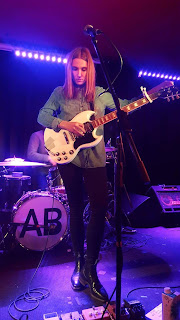Chicano Batman
A four-piece band from Los-Angeles, Chicano Batman comprises Bardo Martinez on guitar, keyboard and vocals, Eduardo Arenas on bass, guitar and vocals, Gabriel Villa on drums and vocals and Carlos Arévalo on guitar. Chicano Batman can be described as a tropicalia, psychedelic soul band with a 1970’s flavour and a sociopolitical bent, and when they perform, they wear matching suits and ruffled shirts. Says Bardo, “We’re making a particular reference that some people understand—Los Ángeles Negros, Los Pasteles Verdes. In the ’70s, it was a big thing where all these cats were playing romantic ballads, but they were funky as hell.”
The band formed in 2008 and have released two EPs and three albums, the most recent of which, ‘Freedom is Free,’ was released in March of this year. They have toured with Jack White, Alabama Shakes and The Claypool Lennon Delirium, and their fanbase is growing all the time.
Chicano Batman have a sound that says ‘let’s drink mojitos on this summer, Sunday afternoon.’ Rest assured, this is definitely a band to watch.
Charles Bradley
American singer, Charles Bradley, has a classic 1960’s/70’s soul/funk sound that has been likened to soul great, Otis Redding. Bradley is signed to Daptone Records, an independent funk and soul record label based in Brooklyn, New York, that is known for it’s revivalist approach to soul music.
Bradley released his debut album ‘No Time For Dreaming,’ in 2011 at 63 years of age to widespread acclaim. He followed up with ‘Victim of Love,’ in 2013 and ‘Changes,’ in 2016. He was also the subject of the documentary film ‘Soul of America.’ Directed by Poull Brien and debuting at the SXSW Film Festival in Austin, Texas in 2012, the film tells Bradley’s life story; from childhood, to his years on the streets, and his eventual success as a soul singer. Bradley’s songs have been frequently sampled by hip hop artists and featured on various TV series.
Bradley has a powerful voice that’s deep and rich, and is perfectly complimented by the vintage sounds of the superb soul/funk Menahan Street Band. If you like classic soul, then Charles Bradley’s your man.
Janelle Monáe
Psychedelic soul queen, Janelle Monáe, is on the rise. Not only does she have three exceptional albums and an EP under her belt, she has earned a slew of Grammy nominations, and in 2016, had major roles in two Academy Award nominated films, one of which ‘Moonlight,’ won the Academy Award for best picture.
Monáe’s science fiction themed concept albums are centred around her alter-ego, the android, Cindi Mayweather. Her brand of psychedelic soul also incorporates, jazz, R&B, hip hop, funk and art rock. Monáe enlists an impressive cast of collaborators on her albums, including Prince, Erykah Badu, Solange Knowles, Miguel, Esperanza Spalding and Outkast’s Big Boi.
Monáe is not only an accomplished artist, but also incredibly interesting. Her tuxedo wardrobe is her signature style. Says Monáe of her style, “I feel like I have a responsibility to my community and other young girls to help redefine what it looks like to be a woman. I don't believe in men's wear or women's wear, I just like what I like. And I think we should just be respected for being an individual.” She also runs her own independent record label, Wondaland Records, making her one of the few black women to do so.
Janelle Monáe is one of the most brilliant, talented and refreshing artists making music at the moment. I absolutely love her! If you haven’t already, check her out.
Childish Gambino
Donald Glover is an American actor, comedian, writer, producer and musician. As a recording artist, Glover performs under the stage name, Childish Gambino. Glover has released three albums as Childish Gambino, ‘Camp’ in 2011, ‘Because the Internet’ in 2013 and ‘Awaken, My Love!’ in 2016. His first two albums are primarily hip hop, but ‘Awaken, My Love!’ is an exercise in psychedelic soul that’s as funky as anything by Parliament-Funkadelic. This album is soul gold.
‘Awaken, My Love!’ is a homage to P-Funk and was heavily influenced by Funkadelic, particularly their 1971 album ‘Maggot Brain.’ I get the distinct impression that Glover is a huge Prince fan too. Says P-Funk originator, George Clinton, “I just heard it [Awaken, My Love] one time and I like the songs. When I did hear it, it sounded like a cross between P-Funk and Prince influence. I’m proud that he’s into the funk and glad him and others are bringing some new funk back.”
So, there you have it. You can’t beat an endorsement from the Grandfather of Funk himself.
















